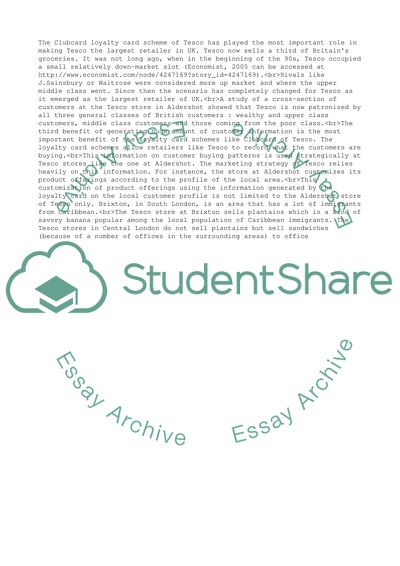Cite this document
(“Loyalty card and customer loyalty: case study of Tesco in UK Literature review”, n.d.)
Loyalty card and customer loyalty: case study of Tesco in UK Literature review. Retrieved from https://studentshare.org/management/1578169-loyalty-card-and-customer-loyalty-case-study-of-tesco-in-uk-aldershot-location
Loyalty card and customer loyalty: case study of Tesco in UK Literature review. Retrieved from https://studentshare.org/management/1578169-loyalty-card-and-customer-loyalty-case-study-of-tesco-in-uk-aldershot-location
(Loyalty Card and Customer Loyalty: Case Study of Tesco in UK Literature Review)
Loyalty Card and Customer Loyalty: Case Study of Tesco in UK Literature Review. https://studentshare.org/management/1578169-loyalty-card-and-customer-loyalty-case-study-of-tesco-in-uk-aldershot-location.
Loyalty Card and Customer Loyalty: Case Study of Tesco in UK Literature Review. https://studentshare.org/management/1578169-loyalty-card-and-customer-loyalty-case-study-of-tesco-in-uk-aldershot-location.
“Loyalty Card and Customer Loyalty: Case Study of Tesco in UK Literature Review”, n.d. https://studentshare.org/management/1578169-loyalty-card-and-customer-loyalty-case-study-of-tesco-in-uk-aldershot-location.


